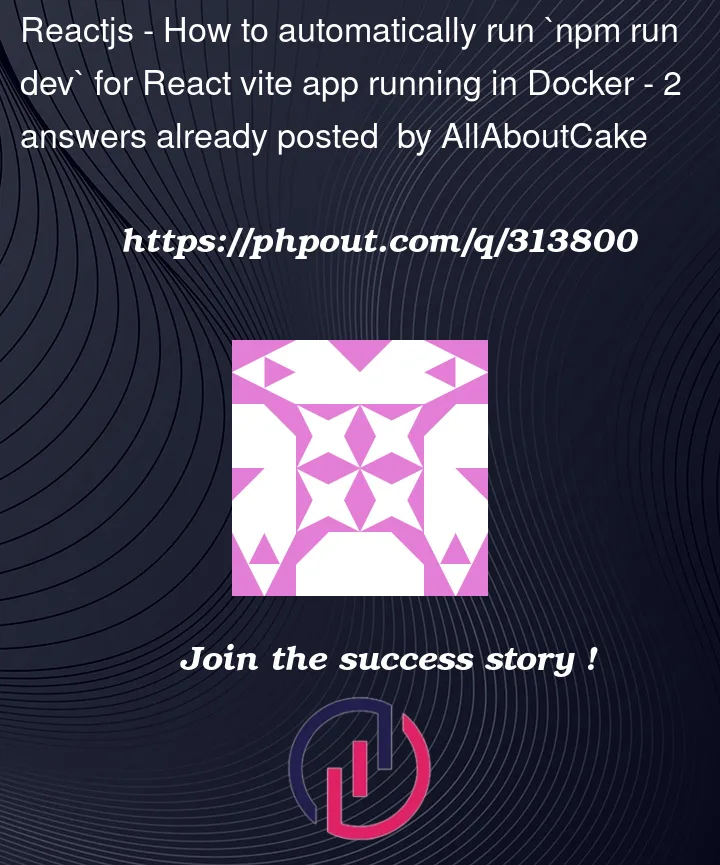I have a Vite React app with a Flask API running in Docker with WSL 2 through docker-compose. But now I have to manually run these commands to be able to access my React app in the browser:
docker exec -it vite_docker sh
npm i && npm run dev
Where can I put these commands so they’re run automatically while the docker-compose is doing it’s thing?
docker-compose.yml
version: "3.8"
services:
vite_react:
image: node:alpine
container_name: vite_react
entrypoint: /bin/sh
ports:
- 3000:3000
working_dir: /srv/app
volumes:
- type: bind
source: ./ML-Flask-React
target: /srv/app
tty: true
flask_app:
build: ./ML-Flask-API
container_name: flask_app
ports:
- 5000:5000
depends_on:
- redis
redis:
image: redis:alpine
Dockerfile Flask:
FROM python:3
WORKDIR /app
RUN pip install --upgrade pip
COPY requirements.txt requirements.txt
RUN pip install -r requirements.txt
COPY . .
CMD [ "python", "app.py" ]
The React app doesn’t have a Dockerfile.




2
Answers
It’s reasonably typical to build your own Docker image to…
For example
Then use this in your Compose service
See this post in regards to the anonymous
/srv/app/node_modulesvolume mount.I’ve named the file
Dockerfile.developmentas you very probably have a production buildDockerfilewhich you won’t want to use for running the dev serverYou can specify
ENTRYPOINT npm run devat the end of your Docker file. This will work as the primary function or command of your application. It will be executed whenever your Docker image is executed.You can learn more about this at ENTRYPOINT